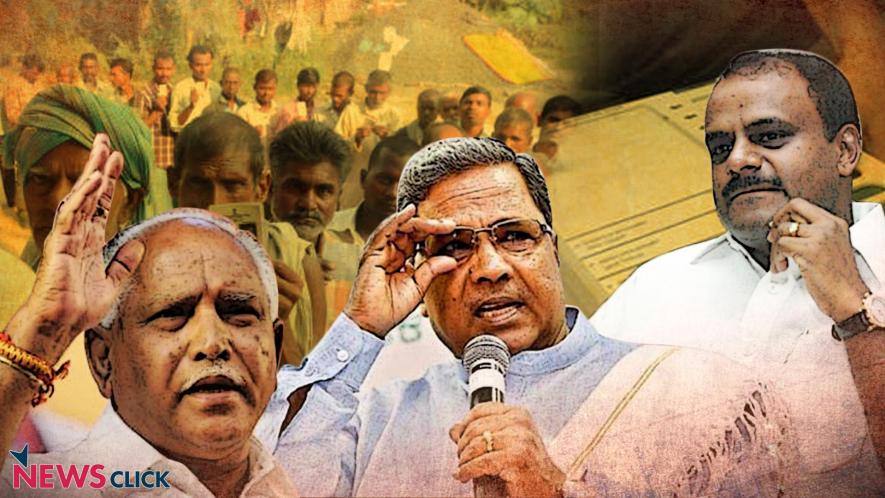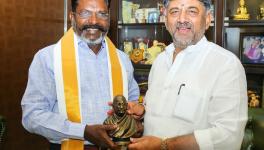Is Caste a ‘Factor’ in Karnataka Assembly Elections 2018

Newsclick Image by Sumit Kumar
As the assembly elections in Karnataka are due to be held in April-May this year, so far it has been established that the principal electoral battle is going to be among three political parties – the ruling party Congress and the two opposition parties BJP and JD(S). In the previous assembly elections held in 2013, Congress formed the government with 124 seats while BJP and JD(S) won 40 seats each. As Caste factor has predominantly remained to be one of the major detriments in any elections in India, political parties in the southern state also seem to rely upon their own caste-centric approach, as is evident in their campaign.
In 2015, the Siddaramaiah government conducted caste census in the state, though the official results were not yet out. However, various media outfits have earlier reported the caste divisions in the state, claiming to be from the survey. According to them, Scheduled Castes constitute to about 18 percent followed by Muslims constituting to about 12.5 percent. The revelations of the survey came as a rebuttal to the earlier claims of Lingayats and Vokkaligas that their communities are in highest percentage resulted to be nearly 9.8 and 8 percentage respectively. While Scheduled Tribes and Kurubas constitute to about 7 percent each and the remaining belong to other backward castes leaving aside 2 percent of Brahmins in the state.
Nevertheless, about 80 percent of the 6.5 crore population of Karnataka belongs to Minorities, OBCs, SCs and STs.
Here is a brief account of the caste appeasements led by the Chief Ministerial candidates of the aforementioned parties.
Chief Minister Siddaramaiah belongs to the backward caste Kurubas, who popularly proclaims himself to be following socio-political philosophy ‘Ahinda’ (Kannada acronym for minorities, backward classes and Dalits). Among the crucial election promises of Congress party in the state is increasing reservation scale up to 70 percent from existing 50 percent, thus wooing voters from minority and vulnerable communities seem to be Congress line of approach.
BS Yeddyurappa, BJP state president and party’s chief minister candidate belongs to Lingayat community, the dominant caste in the state. Despite Yeddyurappa being accused in corruption charges, political analysts argue that his support base among Lingayat voters was the main reason behind making him the face of the saffron party in the state. However, BJP, with the support of its affiliated organisations has continued in indulging in polarization politics between Hindus and Muslim religions in the state, as per numerous reports. On the other side, JD(S) had earlier announced that its CM candidate as H.D. Kumaraswamy, son of former Prime Minister H.D. Deve Gowda, belongs to Vokkaligas, another dominant caste in the state.
On 8 February, JD(S) had officially forged an alliance with Bahujan Samajwadi Party (BSP) for the upcoming elections. Therefore hoping support from upper caste Vokkaligas and Dalits.
Despite the caste figures and the political parties ways of appeasements to certain castes and religious groups, factors such as agriculture distress, unemployment, and other socio-economic indicators play a dominant role in caste.
Get the latest reports & analysis with people's perspective on Protests, movements & deep analytical videos, discussions of the current affairs in your Telegram app. Subscribe to NewsClick's Telegram channel & get Real-Time updates on stories, as they get published on our website.
























